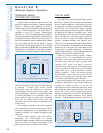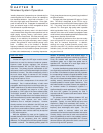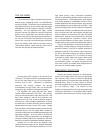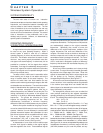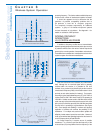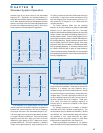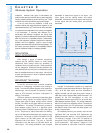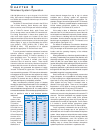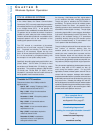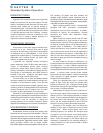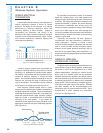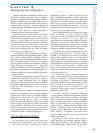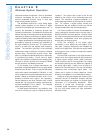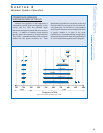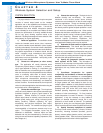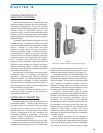
Selection
and Operation
of Wireless Microphone Systems
30
C HAPTER 3
Wireless System Operation
DTV VS. WIRELESS SYSTEMS
In the United States, the Federal Communications
Commission (FCC) is currently supervising the transition
of broadcast television from its traditional analog format
to an all-digital format (DTV). In the process, the
commission is also mandated to increase efficient use of
TV spectrum and to increase the amount of spectrum
available for public safety and other wireless services.
Therefore, the transition provides for consolidation of the
broadcast spectrum and for the reallocation of the
resulting open spectrum to other uses.
The FCC intends to consolidate all broadcast
television into a "core" band, currently TV Channels
2-51. Proposed and existing TV stations above
Channel 51 will eventually migrate into the core
band. All former television spectrum above Channel
51 is to be auctioned by competitive bidding, with
the exception of new "public safety" bands.
Specifically, the public safety bands total 24 MHz in two
"paired" bands: 764-776 MHz (TV 63-64) for fixed
transmitters and 794-806 MHz (TV 68-69) for mobile
transmitters. The remaining spectrum, 698-764 MHz
(TV 52-62) and 776-794 MHz (TV 65-67), will be
allocated for commercial fixed and mobile services as
well as possible "new" broadcast services.
As of January 1, 2003 there were 700+ digital stations
on-air, in addition to the 1600+ existing analog stations.
Though not quite on schedule, the DTV transition is
proceeding. The primary concern for wireless system
operators remains the same: the potential loss of
operating spectrum due to interference from television
transmitters, whether digital or analog. Though digital
and analog signals differ in some respects, the defense
is the same: avoid operating in active TV channels. The
difficulty is the increased number of TV transmitters
(potentially double) during the DTV transition period
and the increased density of TV transmitters in the
"core" spectrum after the transition period.
Though it is likely that there will be a net reduction in the
final number of television stations after the
transition period, the core spectrum (TV 2-51) will
certainly be more crowded than at present, and the
former television bands will host various new radio
services. However, it is expected that wireless systems
will continue to be allowed to operate as low power aux-
iliary stations (LPAS) throughout their original spectrum.
Thus, for near term applications, wireless system users only
need to keep track of DTV stations as they go
on-air during the transition period. For long term
applications, however, wireless system users will have to
contend with the spectrum landscape after transition:
broadcast transmitters will be in place but commercial and
public safety services will have to be taken into account as
they come on-line. Ultimately, the existing VHF and UHF
bands still appear to be the best choice for wireless system
operation, but practical equipment will likely have to employ
advanced frequency agility or other technologies to make
the best use of scarce spectrum resources.
Timetable for DTV transition:
Telecommunications Act of 1996 provides for
digital television
April 3, 1997: existing TV stations (1600+)
assigned a second channel for DTV
May 1, 1999: 40 top-10 market stations
required to be on-air
November 1, 1999: 120 top-thirty stations
required to be on-air
May 1, 2002: all commercial stations
required to be on-air
May 1, 2003: all non-commercial stations
required to be on-air
May 1, 2005: broadcasters required to
make final channel choice
December 31, 2006: broadcasters
required to move to "core" spectrum,
analog transmission ends
Coordinating frequencies?
Looking for unoccupied television channels?
Check out:
www.shure.com/frequency
or
www.shure.com/faq
For a complete list of
U.S. television frequencies...
see Appendix B on page 57.



